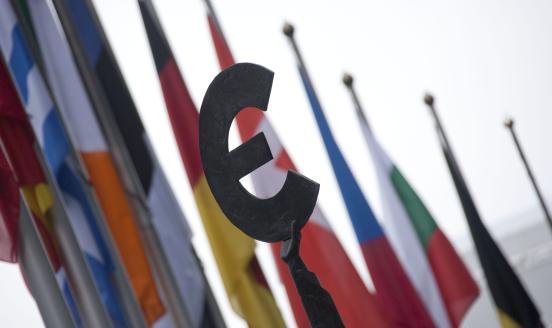G20: Decreasing returns
Macroeconomic coordination, the hallmark of the first few G20 summits, went through three successive phases. The first phase, from Washington to Pit
Macroeconomic coordination, the hallmark of the first few G20 summits, went through three successive phases. The first phase, from Washington to Pittsburgh, focused on stimulating the global economy across the board. The second phase, from Toronto to Cannes, shifted towards a more complex set of objectives, with the aim of avoiding a resurgence of global imbalances. The third phase, from Cannes onwards, put the focus on the European crisis. The initial achievement was major. But the story is one of diminishing returns. The effectiveness of the G20 in macroeconomic coordination declined from one phase to the next.
The G20 was created in extraordinary times. Its initial focus was on coordinating a global stimulus to ward off depression, equipping the IMF with sufficient resources to cope with potential requests, and beefing up global liquidity.
Data confirms that a stimulus was engineered not only in the advanced G20 group but also, and to a broadly similar extent, in the emerging group. Russia, India and China were among the countries where the 2008-09 effort was greatest. With hindsight, whether or not the IMF was right to call for a uniform response is a matter for discussion. Spain, especially, took part fully, but soon realised that it had overestimated its fiscal space. The IMF in this respect lacked caution. However it was probably wise to advocate an across-the-board stimulus, rather than a tailor-made one whose preparation would have taken precious time and opened the door to endless disputes.
The London summit also agreed on a $500 billion increase in IMF resources and on a special allocation of SDRs. The increase in IMF resources made a large increase in lending possible. Without the replenishment of resources at the time of the London summit, the commitment capacity of the Fund would have been severely constrained already in 2009.
Summing up, in this first period the G20 achieved fostered coordinated responses to the global crisis. For a group of rather heterogeneous countries with little tradition of dialogue and joint action, this must be considered a significant achievement.
The aftermath was more complicated because it involved addressing a conceptually debatable and politically delicate issue: the so-called global imbalances. The intellectual background to the policy agenda was the fear that the recovery would leave these imbalances largely untouched. The goal, to quote from the Pittsburgh declaration, was to develop “a forward-looking analysis of whether policies pursued by individual G20 countries are collectively consistent with more sustainable and balanced trajectories for the global economy” that would feed into the leader’s discussions and help decide on joint action. This was the purpose of the ‘Mutual Assessment Process’ (MAP).
This was a difficult endeavour. To start with, there had never been a consensus among economists on the risks involved in the persistence of global imbalances. Second, previous attempts at global discussions on imbalances had failed to deliver any meaningful result. Third, the G20 itself experienced difficulties with the topic, as indicated by the absence of an explicit reference to it in the Washington summit declaration of 2008.
As conducted for the Toronto and Seoul meetings, the MAP was a cumbersome exercise technically. At the Seoul meeting it was agreed to ‘enhance’ the MAP by outlining ‘concrete policy commitments’ for each of the members. This agreement opened the way to a more ambitious attempt at multilateral surveillance. A set of indicators and guidelines intended to help tackle global imbalances through policy adjustment in the key countries was adopted in April 2011. Recommendations were issued as part of the Cannes G20 Action Plan: there was agreement on differentiated budgetary consolidation strategies, including through letting automatic stabilisers work in Australia, Brazil, Canada, China, Germany, Korea and Indonesia.
The process however faces three difficulties. First, the model of international interdependence underlying the MAP may not capture the relevant channels of transmission of shocks. It puts emphasis on interdependence through flows and prices, while empirical research, notably the evaluations provided by the IMF in the context of its spillover reports, emphasises interdependence through cross-border holdings of financial assets. Interdependence through traditional channels can be dwarfed by that arising from gross holdings of financial assets and the bellweather role of US capital markets.
Second, the whole exercise is predicated on the assumption that global imbalances will remain a serious concern for the world economy. The pattern of imbalances, however, has changed significantly with the reduction of the Chinese surplus and the rise of those of oil-producing countries. Some observers do not see current-account imbalances as a problem but as a normal response to the asymmetry in the state of public finances between the advanced and the emerging countries. There is a difficult trade-off here: to keep focusing on the same issue helps narrowing down differences through the development of common concepts, indicators and guideposts. As indicated by the European experience, however, this process takes time. Keeping the focus on a particular set of issues involves the risk of focusing the policymakers’ attention on the wrong issues.
Third, it is not clear which of the participating countries is ready to trade a change in its own policy for a change in its partner’s policy. Would, for example, a Chinese exchange-rate adjustment facilitate a US budget agreement?
On the whole, this second period was clearly less successful than the first.
The third phase started in Cannes in November 2011. The summit was meant to be devoted to global discussions, not least about reforming the international monetary system, but it was largely hijacked by the euro crisis. In the months that followed, the international discussion was again largely dominated by the European crisis.
Decisions announced on the occasion of the 2012 IMF/World Bank spring meetings in Washington resulted in pledges to increase IMF resources by $430 billion. Although these resources are not earmarked for any particular country, they are widely regarded as motivated by the precarious state of the euro area and some countries within it.
On this occasion however the G20 as an institution failed to provide the ‘premier forum for international economic cooperation’ that it said it would be. First, two major members, the US and Canada, broke ranks with the consensus on increasing IMF resources. Second, disagreements on the policy prescription for Europe could not be resolved. In a context of serious concerns about the pace of the recovery, the communiqués from Mexico (February) and Washington DC (April) did not go beyond platitudes.
There are probably two reasons for this disappointing result. First, Europe is difficult because of its internal coordination process. Two-level coordination (ie coordination within the EU and between the EU and external partners) is inherently difficult. Second, the problem at stake is highly asymmetric. The rest of the world expect from Europe that it sorts out its problems and while it has shown willingness to extend a helping hand, this inevitably comes with strings attached: emerging countries want more say in exchange. This is not the easiest of all sorts of dialogue.
In conclusion, macroeconomic coordination has delivered less and less. To what extent is this decline in effectiveness due to the nature of the problems on the agenda and to what extent to the evolution of the dialogue and the participants’ commitment to the process? There is no easy answer to this question. Clearly, what was done in 2008-09 was by nature exceptional and the subsequent steps were bound to be of lower intensity. Also, the mere willingness to discuss global policy issues and their national ramifications is a non-negligible achievement. Issues, at least, are increasingly named.
Yet the outcome remains disappointing. One cannot but ask questions about the ability of the G20 to avoid the traps that, over time, greatly reduced the effectiveness of the G7/G8 summits. It is certainly too early to claim that the G20 has failed, but early enough to wonder whether it is on track towards lasting success.



